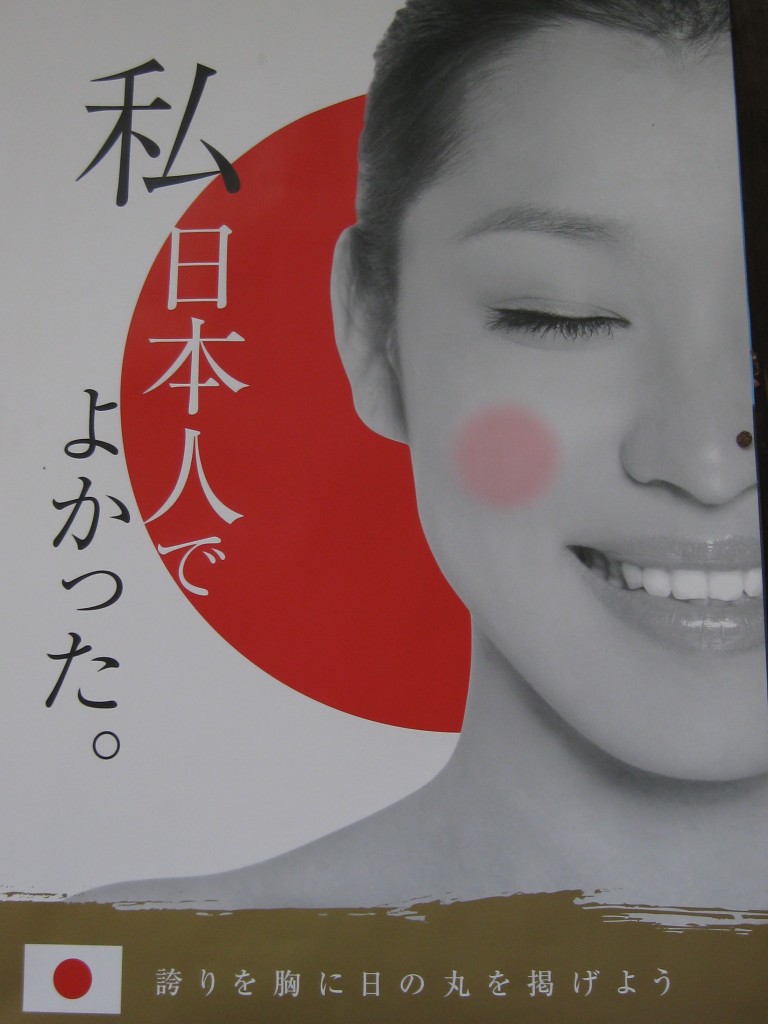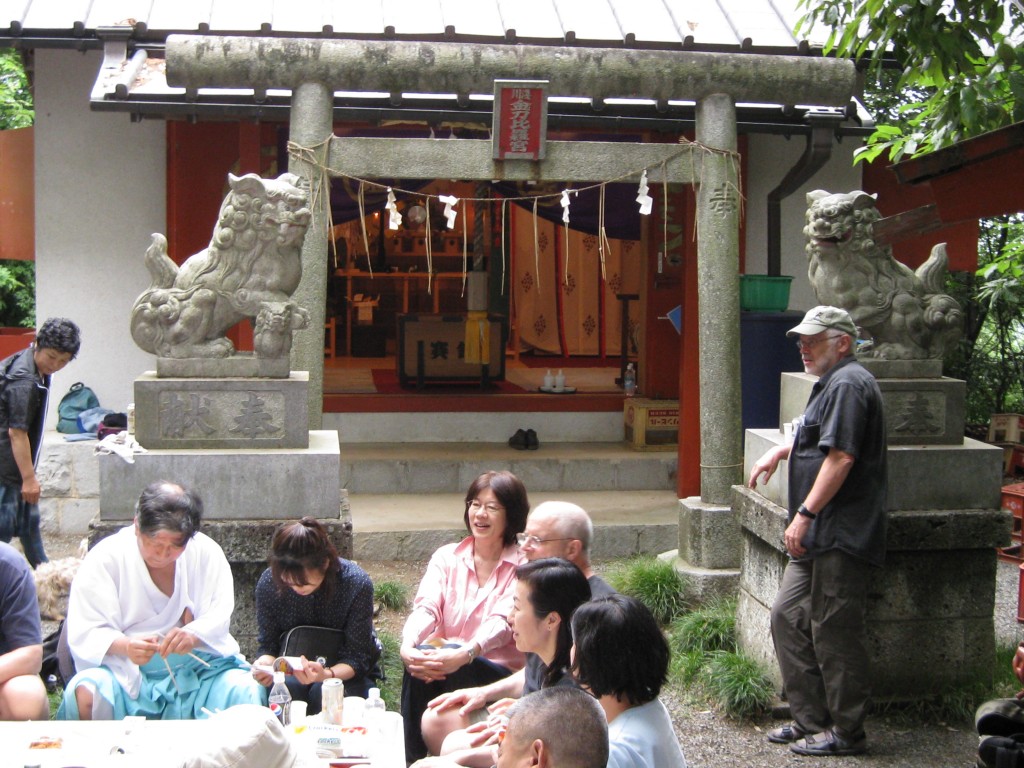An interesting poll has just come out about attitudes to immigrants with Japanese blood. “80% of Japanese welcome foreigners of Japanese descent'” shouts a headline in the Japan Times. It’s framed as if it constitutes a new openness to immigration.

"It's good I am Japanese," says this shrine poster. But isn't it good to be a non-Japanese?
However, the poll stands in direct contrast to attitudes towards non-Japanese. According to the “J-CAST Company Watch” survey results, 48.5% of respondents expressed “firm opposition” to immigration to Japan. A further 19.3% “do not really want to let them in” and another 16.8% “might consider it if unavoidable.” Only 14.4% “wholeheartedly endorsed” letting them in. This is despite the looming labour shortage in a country which is about to have the biggest proportion of over-65s in world history.
What does all this have to do with Shinto?
Well, it just might be linked to the notion of a chosen race promoted by nationalists who draw inspiration from the Kojiki (712) to claim that Japanese alone are children of the kami. The chief culprit in this is the scholar Motoori Norinaga (1730-1801), who had a visceral dislike of the Chinese and wanted to show the distinctiveness of Japan. Like many a fundamentalist, Motoori took the early myths literally and believed that the emperor really was descended from heavenly ancestors. It led him to make outrageous statements about the superiority of Japanese to all other races.
As it happened, the Nativist movement of which Motoori was a leading thinker inspired the Meiji Restoration politicians who shaped Shinto into an emperor-centred religion. The logical outcome was State Shinto and the excesses of World War Two. Other races were seen as inferior.
Fortunately those days are behind us, and as any foreigner in Japan knows it’s a most pleasant place to live. At the same time alone among developed countries it remains fiercely monoethnic. It has led to agonising about how to deal with the imminent shortages of labour and whether to let in more non-Japanese.
We stand at a crossroads now where Japan’s indigenous religion faces the painful process of moving from a racial to an interracial religion. The present generation has seen the adoption of the first ever non-Japanese priests and the spread of Shinto sympathisers in foreign countries. After 2000 years Shinto is facing its ‘St Paul’ moment of having to embrace ‘gentiles’.
In a global age, the old thinking of racists like Motoori will need to be discarded, and the notion of universalism embraced. We are all children of the kami now.

Embracing the future: Shinto's spread to non-Japanese is inevitable in a global world

I find the concept of “historical inevitability” vaguely creepy, especially when it is applied to modifying religious doctrine.
WRT Avery’s comment, I have been hearing people in the country I live in talking about that a lot. They believe that their religious doctrine does not change, even though it clearly does, and are oblivious to the ways and reasons it has. And they are strongly resisting the changes that would make their religion, as well as their politics, more humane for homosexual humans, whose suffering and death they are currently causing.
Some of them have spent a lot of time and effort talking about how “historical inevitability” either doesn’t apply to them or doesn’t matter. I think they should talk less and listen more. I also think it’s encouraging, to me, to think that “the arc of history bends towards justice.”
Belief in a “chosen race” is a cause of injustice.